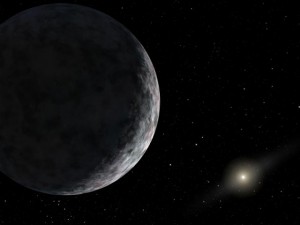Why is it that so many of the recent Kuiper Belt discoveries — including the “10th planet,” 2003 UB313 — have been made while the objects are at aphelion?

Timing and luck. Objects that orbit the Sun spend most of their time near the farthest point of their orbits, where they move most slowly. The more eccentric the orbit, the more lopsided the motion. Comets are the extreme example. Halley’s Comet spends less than 3 percent of its 76-year long trek inside the orbit of Jupiter and only 0.5 percent of its time within the orbit of Mars. So one would expect to see the vast majority of Kuiper Belt objects (KBOs) near the farthest points of their orbits (aphelion). That said, the fact that so many of the largest KBOs — including the now-famous 2003 UB313 — were discovered while at aphelion is just a coincidence. Indeed, headline grabbers such as 2005 FY9 and 2003 EL61 (S&T: October 2005, page 28) are currently as far from the Sun as they can ever be.
— David Tytell
 0
0
Comments
You must be logged in to post a comment.